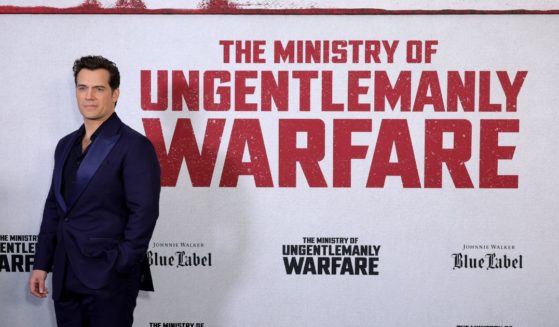The 'Prism of Ism': How Gillette's Anti-Man Ad Campaign Got It So Wrong
Playing off the theme of its “The Best a Man Can Get” ad campaign, Gillette’s controversial “The Best a Man Can Be” launch might have the company ultimately wondering whether the approach will be the best ad strategy for Gillette.
The effort has certainly garnered its share of publicity. However, a lot of it isn’t good. Backlash has been significant since the first ad aired Jan. 14.
And if a new study is any indication, Gillette’s decision to navigate the politics of so-called “toxic masculinity” might lead to significant financial repercussions for the Proctor & Gamble owned company.
The study was authored John Schuster and titled “Botching the Bottom Line: Why Sacrificing the Core to Appease Progressive Activists is a Really Bad Business Model” (available on Amazon).
It analyzes a half-dozen businesses. Among them are ESPN, the NFL and Dick’s Sporting Goods, which Schuster argues suffered from similar strategy missteps to the model it appears Gillette is following.
In a Jan. 19 phone interview, Schuster, who has a master’s degree in public relations and decades of experience in print and electronic media, said companies that get involved in political questions are likely to end up only hurting themselves.
“Two things happen,” he said. “Company CEOs are afraid of the social justice backlash prevalent on social and traditional media. As a result they attempt to appease that outcry, but when they do, they alienate a core audience that doesn’t like being preached to or told it did something wrong.”
Said Gillette in a statement on its website, dedicated to the campaign: “It’s time we acknowledge that brands, like ours, play a role in influencing culture. And as a company that encourages men to be their best, we have a responsibility to make sure we are promoting positive, attainable, inclusive and healthy versions of what it means to be a man.”
No, they don’t, says Schuster. “Beyond being stunningly arrogant, Gillette’s actual responsibility is to sell quality men’s grooming products, and they’re not doing that very well because they’ve managed to alienate a majority of their audience.”
See the ad here:
https://youtu.be/koPmuEyP3a0
Schuster says much of the problem has to do with tone.
“They do so within the first 10 seconds of the ad,” Schuster said. “A narrator proclaims, ‘We believe in the best in men. To say the right thing, to act the right way. Some already are. But some is not enough.’
“No. Most already are,” Schuster said. “Honestly, ‘most’ isn’t accurate. It’s an overwhelming majority of men. So the ad says, in essence, ‘we believe that most of the people who buy our products have been jerks for 30 years.’ It’s not motivating and inspirational. For a majority of your purchasers, it’s insulting. How do you think your customer base is going to respond?”
Indeed, backlash has been significant, highlighted by a viral social media post featuring Blaze TV personality Graham Allen and his two sons guns and proclaiming, in defiance, “Practicing our ‘toxic masculinity. “Hey Gillette, does this offend you? I’ll raise my kids the way I believe they should be…thanks for your advice.”
But Schuster says Allen isn’t Gillette’s concern. Indeed, he’s a predictable player in this yarn, and Gillette and those in support of the ad campaign can paint Allen as the poster child for conservative dogma, and therefore largely not relevant — and even a dinosaur — when it comes to changes and modern mores.
“Gillette believes this is a small sliver of the audience,” Schuster said. “As a result, it won’t have any real impact on their bottom line while helping them in media and social justice circles. Other companies have made the same mistake, and suffered significant financial ramifications in the process because there’s an entire sector of the purchasing public that isn’t as politically motivated, but still doesn’t take kindly to being preached to about their behavior by a company that exists to sell them something.”
Schuster’s study uses another recent analysis as its baseline. “Botching the Bottom Line” compiles data from More in Common’s “Hidden Tribes” study, released by the organization in October of 2018.
In that study, More in Common breaks respondents into seven general categories based on politically driven ideals and overall philosophical perspectives. It notes that fringe entities, operated by so-called progressive activists on the far left and devoted conservatives on the far right, dominate the flow of political conversation, despite accounting for a total of 14 percent, or 1 in 7 residents.
Progressive activists make up 8 percent of that overall total, but approach issues in a non-traditional, social justice-driven capacity that gives them a greater voice than other more populated so-called “tribes.”
“Businesses are succumbing to those who operate from a prism of ism,” Schuster said. “In this case, Gillette is reacting to the outrage of sexism highlighted by the #metoo movement. But most of its core audience doesn’t view itself as Harvey Weinstein. Still, Gillette seems to struggle with the distinction in its ad tone. Furthermore, most of those offended by the ad’s delivery won’t post about their outrage on social media. They’ll just stop buying the product.”
Schuster’s findings indicate the actual impact of progressive activist-driven protests on businesses can be dramatically misinterpreted by conflict-averse corporate leaders.
“The progressive activist benefits from a perfect confluence of circumstances to wield more undue influence over businesses than their percentage of the population would suggest,” Schuster said. “They are more active on social media, have the ear of a like-minded media and often target businesses that aren’t associated with their shopping demographic in the first place.”
The result, says the “Botching the Bottom Line” study, is CEOs often fear the barrage of negative publicity, view the outcry as representative of their customer base, and react in ways counterproductive to the beliefs and perspectives of their core purchasers.
“The impact of the boycott, protest or outcry has little to do with a hashtag movement. It’s more about ignoring the initial mission of a company,” Schuster said. “That is, to sell a product and understand your core audience. Businesses often hurt themselves, not because they catered to the outcries and accompanying social media and traditional media attention, but because they did so at the expense of those who have been loyal to them.”
Schuster said Gillette could be travelling the same road, and he predicts that if numbers indeed decline, the company will approach lagging results in ways similar to predecessors.
“When Dick’s Sporting Goods saw sales slip, they initially blamed it on losing exclusivity deals with Under Armour,” said Schuster. “It took them three quarterly down cycles to finally admit their stricter gun sales policy played a significant role in the downturn. The NFL and ESPN found other reasons initially. too, but eventually had to admit a social justice approach alienated their core audience, and have since tried to adjust their tone and not offend a major portion of those who once enjoyed their product.
“If numbers are down for Gillette in the first quarter where the ad campaign took effect, they’ll blame increasing competition from Harry’s and Dollar Shave Club. If numbers continue to descend for multiple quarters, they’ll eventually have to admit this ad campaign wasn’t the best Gillette could be.”
Matt Valance is a free-lance reporter who focuses on politics, sports, pop culture and the increasing echo chamber impact of social media.
The views expressed in this opinion article are those of their author and are not necessarily either shared or endorsed by the owners of this website. If you are interested in contributing an Op-Ed to The Western Journal, you can learn about our submission guidelines and process here.
Truth and Accuracy
We are committed to truth and accuracy in all of our journalism. Read our editorial standards.











